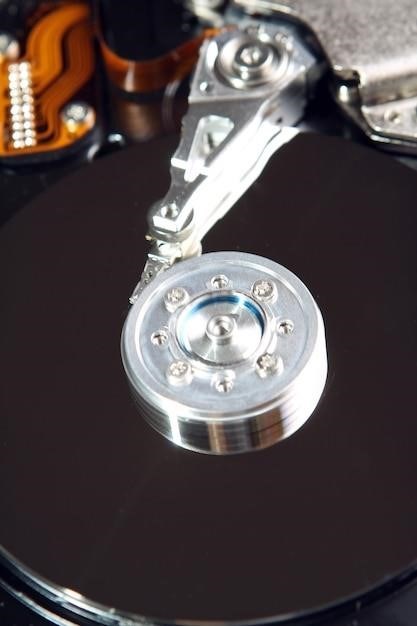A car door that won’t lock manually can be frustrating and compromise security. Common causes include key fob issues, faulty wiring, or worn-out locks. Addressing the problem promptly is essential to prevent break-ins and ensure your vehicle’s safety. While some issues are simple to fix, others may require professional assistance. Understanding the root cause and taking appropriate steps can help resolve the problem effectively.
Overview of the Issue
A car door that won’t lock manually is a common issue that can stem from various factors, including mechanical or electrical faults. Both manual and electronic locking systems can be affected, leading to inconvenience and potential security risks. The problem often arises from worn-out components, such as keys or locks, or issues with the door lock actuator. Faulty wiring or a blown fuse can also disrupt the locking mechanism. Addressing the issue promptly is crucial to ensure vehicle safety and prevent further complications. Understanding the root cause is the first step toward an effective solution.
Importance of Addressing the Problem
A car door that won’t lock manually poses significant security risks, making your vehicle vulnerable to theft or vandalism. Failing to address the issue can lead to further mechanical damage, increasing repair costs over time. Additionally, an unlocked door may compromise your car’s safety features, putting you and your belongings at risk. Regular maintenance and prompt repairs are essential to ensure your vehicle remains secure and functional. Ignoring the problem can result in more severe complications, emphasizing the need for timely action to protect your investment and personal safety.
Common Causes of a Car Door Not Locking Manually
A car door may fail to lock manually due to key fob issues, door lock actuator problems, faulty wiring, a blown fuse, or worn-out keys or locks.
Key Fob Issues
A key fob malfunction is a common reason for manual locking issues. A dead battery or faulty buttons can prevent the fob from sending signals. Additionally, programming problems or damage to the fob’s internal circuitry may cause it to malfunction. If the fob fails, the door lock may not respond, even when using the manual mechanism. Troubleshooting steps include replacing the battery, testing the fob on other doors, or reprogramming it. In severe cases, the fob may need to be repaired or replaced by a professional.
Door Lock Actuator Problems
A faulty door lock actuator is a common cause of manual locking issues. The actuator, responsible for mechanically locking and unlocking the door, can malfunction due to dirt, moisture, or mechanical failure. Symptoms include strange noises, partial locking, or the lock not moving at all. In some cases, the actuator may become stuck or broken, requiring replacement. While cleaning the mechanism might resolve minor issues, severe problems often need professional attention. Regular maintenance, such as lubricating the lock, can help prevent actuator failure and ensure smooth operation.
Faulty Wiring
Faulty wiring is a common issue that can prevent a car door from locking manually. Corrosion, physical damage, or electrical failures in the wiring can disrupt communication between the lock and the car’s system. This may result in intermittent locking, partial function, or complete failure. Checking for visible damage or electrical connectivity issues can help identify wiring problems. In such cases, professional repair or replacement of the wiring is often necessary to restore proper function. Regular inspections can help prevent wiring-related issues from arising.
Blown Fuse
A blown fuse can disrupt the electrical system controlling the car door’s manual locking mechanism. If the fuse responsible for the door locks is blown, the system loses power, preventing the lock from engaging. Symptoms include unresponsive locks or inconsistent operation. To diagnose, check the fuse box for signs of a blown fuse, such as a broken or discolored filament. Replacing the fuse may resolve the issue, but frequent blown fuses could indicate a deeper electrical problem requiring professional attention to prevent further complications.
Worn-Out Keys or Locks
Worn-out keys or locks can prevent a car door from locking manually. Over time, keys may become damaged or misshapen, failing to engage properly with the lock mechanism. Similarly, locks can wear out, causing the key to fit poorly or not turn smoothly. This can lead to inconsistent or failed locking attempts. If the key is damaged, trying a spare key may resolve the issue. If the lock itself is worn, it may need to be cleaned, lubricated, or replaced to restore proper function and ensure the door locks securely.
Symptoms of a Faulty Manual Locking System
A faulty manual locking system may exhibit symptoms like the lock not moving, partial locking, strange noises, or unresponsive keys, indicating potential issues with the mechanism.
Lock Does Not Move
If the car door lock does not move when attempting to lock or unlock it manually, it may indicate worn-out keys or locks. Dirt and grime can accumulate inside the lock, preventing proper function. Using the wrong key or a damaged one can also cause this issue. In some cases, the lock mechanism itself might be jammed due to debris or corrosion. Cleaning the lock or trying a different key may resolve the problem. If the issue persists, professional assistance may be necessary to repair or replace the lock.
Partial Locking or Unlocking
Partial locking or unlocking occurs when the car door lock only engages partially, leaving the door vulnerable. This issue often stems from faulty wiring, a blown fuse, or a malfunctioning door lock actuator. Dirt or debris in the lock mechanism can also cause incomplete locking. If the key is worn or misaligned, it may fail to fully activate the lock. Testing the key in other doors or using the key fob can help identify the source of the problem. Addressing this issue promptly is crucial to ensure proper security and functionality of the vehicle.
Strange Noises
Strange noises when attempting to lock or unlock a car door manually can indicate underlying issues. Grinding, clicking, or clunking sounds may suggest a faulty door lock actuator or worn-out mechanical components. Dirt, debris, or lack of lubrication in the lock mechanism can also cause unusual noises. If the key is misaligned or damaged, it might produce scraping or rattling sounds. These noises often signal that the locking system is not functioning properly and may require immediate attention to prevent further damage or security risks. Addressing the issue early can help avoid more costly repairs down the line.
Unresponsive Keys
Unresponsive keys can prevent manual locking, often due to wear, damage, or incorrect use. If the key is worn or damaged, it may not align properly with the lock, causing it to malfunction. Additionally, using the wrong key or excessive force can further damage the lock mechanism. Cleaning the key and lock or replacing a damaged key may resolve the issue. If the problem persists, it could indicate a deeper issue with the lock cylinder or door mechanism, requiring professional attention to ensure proper function and security.
Troubleshooting Steps
Start by checking the key for damage or proper alignment. Test other doors to isolate the issue. Inspect the lock mechanism for obstructions or wear. Try the key fob to ensure it’s functioning correctly. If the problem persists, consider consulting a professional for further diagnosis and repair.
Checking the Key
Begin by ensuring you’re using the correct key for the door lock. Inspect the key for visible damage, wear, or rust, which can prevent proper insertion or turning. Clean the key and lock cylinder to remove dirt or debris that might interfere with the mechanism. Check if the key is bent or warped, as this can hinder its ability to engage the lock properly. If the issue persists, try using a spare key to determine if the problem lies with the key itself. If the spare key works, the original key may need replacement.
Testing Other Doors
Test other doors to determine if the issue is isolated to one door or widespread. If other doors lock manually without problems, the faulty door’s locking mechanism may need attention. Check each door’s lock cylinder and ensure proper key insertion. If multiple doors fail to lock, it could indicate a systemic issue, such as faulty wiring or a blown fuse. This step helps isolate the problem, guiding further troubleshooting or repair efforts effectively.
Inspecting the Lock Mechanism
Inspecting the lock mechanism is crucial to identify physical issues. Use a flashlight to examine the lock cylinder and surrounding components for dirt, rust, or damage. Check if the lock’s internal parts are moving freely or if they appear jammed. Clean out any debris that might be obstructing the mechanism. If you notice worn or damaged components, consider replacing them. This step helps determine if the problem lies within the lock itself or elsewhere, guiding further repair actions effectively.
Trying the Key Fob
Testing the key fob is a critical step in diagnosing manual locking issues. Ensure the battery is functional and signals are reaching the car. Press the lock and unlock buttons to see if the door responds. If it works intermittently, interference or weak signal strength might be the cause. Try using the fob closer to the vehicle to rule out range issues. If the fob fails to work, attempt locking manually with a spare key. If the issue persists, consult a professional to repair or replace the key fob.
DIY Repair Solutions
Clean the lock mechanism to remove dirt or debris. Check keys for damage and replace if necessary. Lubricate the lock to ensure smooth operation. Replace worn parts promptly.
Cleaning the Lock
Cleaning the lock is a simple yet effective solution. Use a can of compressed air to remove dirt and debris from the lock mechanism. Gently spray the air into the keyhole and around the lock’s surface. For stubborn particles, use a soft-bristled brush or a cotton swab. Avoid harsh chemicals, as they may damage the lock. After cleaning, insert and remove the key several times to ensure smooth operation. If the lock still doesn’t function, consider lubricating it with a silicone-based spray. Regular cleaning prevents future issues and keeps the lock functioning properly.
Checking the Key for Damage
Inspect the key for visible damage, such as worn teeth, rust, or breaks. A damaged key may not align properly with the lock, preventing manual locking. If the key is bent or warped, it can also cause issues. Try using a spare key to see if the problem persists. If the spare key works, the original key may need replacement. Avoid using harsh chemicals or abrasive materials, as they can further damage the key or lock mechanism. Regularly checking and maintaining your keys can help prevent future locking problems.
Replacing the Key
If your key is damaged or worn out, replacing it may resolve the manual locking issue. Start by obtaining a replacement key from a locksmith or dealership. Ensure the new key is precisely cut to fit your lock. Test the key in the door lock to confirm it works smoothly. If the issue persists, the problem may lie elsewhere. Replacing the key is a cost-effective solution compared to repairing or replacing the entire locking mechanism. Always keep a spare key handy to avoid future inconvenience.
Replacing the Lock Cylinder
If the lock cylinder is damaged or worn out, replacing it is necessary. Start by removing the door panel to access the cylinder. Use a screwdriver to disconnect the linkages and electrical connectors. Install the new cylinder, ensuring it aligns properly with the door lock mechanism. Reattach the linkages and connectors, then reassemble the door panel. Test the lock to ensure it functions correctly. Replacing the lock cylinder is a more involved process but can resolve persistent locking issues. Always use a high-quality replacement part for reliability.
Preventive Maintenance
Regular cleaning and lubricating the lock mechanism can prevent wear and tear. Avoid using force, which may damage the lock or door components over time.
Regular Cleaning of the Lock
Regular cleaning of the car door lock is essential to maintain its functionality. Use a soft cloth or brush to remove dirt and debris that may accumulate. Apply a silicone-based spray to lubricate the lock mechanism, ensuring smooth operation. Avoid using harsh chemicals or abrasive materials that could damage the lock. Clean the key slot and surrounding areas periodically to prevent dust buildup. This simple maintenance can prevent issues like stuck keys or faulty locking mechanisms, ensuring your car door locks manually without hassle.
Lubricating the Lock
Lubricating the lock is a simple yet effective way to ensure smooth operation. Use a silicone-based spray to prevent sticking and wear. Spray the lubricant directly into the key slot and gently move the lock mechanism to distribute it evenly. This helps maintain the lock’s functionality and prevents issues like stuck keys or difficulty locking manually. Regular lubrication can extend the life of your car’s locking system and keep it functioning reliably over time.
Avoiding Force on the Lock
Avoiding force on the lock is crucial to prevent further damage. Forcing the key or lock mechanism can break the key or misalign internal components. Instead, gently manipulate the lock and key to ensure proper alignment. If the lock feels stuck, check for debris or obstructions. Cleaning and lubricating the lock can often resolve sticking issues without causing harm. Excessive force can lead to costly repairs, so it’s important to handle the lock with care. Regular maintenance can help maintain smooth operation and prevent the need for aggressive actions.
When to Consult a Professional
Consult a professional if multiple doors fail to lock, or if ignition and key-related issues arise. Signs of electrical problems, such as inconsistent locking behavior, also warrant expert attention.
Signs of Electrical Issues
Signs of electrical issues include inconsistent locking behavior, key fob malfunction, or doors not responding to manual inputs. If the door lock actuator fails to engage or disengage, it may indicate faulty wiring or a blown fuse. Additionally, if the key fob stops working entirely or only functions intermittently, it could signal an electrical problem. These issues often require professional diagnosis and repair, as they may involve complex wiring or actuator replacement. Addressing these signs promptly is crucial to restore proper locking functionality and ensure vehicle security.
Multiple Doors Not Locking
If multiple doors fail to lock manually, it often indicates a systemic issue rather than an isolated problem. Faulty wiring, a blown fuse, or a malfunctioning key fob can affect all doors simultaneously. Additionally, worn-out keys or locks may cause inconsistent locking behavior across multiple doors. This widespread issue typically points to an underlying electrical or mechanical problem that requires professional attention. Addressing it promptly is essential to restore full functionality and ensure the vehicle’s security and reliability.
Ignition or Key-Related Problems
Ignition or key-related issues can directly impact the manual locking system of your car. A worn-out key or one that isn’t properly cut may fail to engage the lock mechanism. Additionally, electrical problems with the key fob or ignition switch can prevent manual locking. If the key won’t turn in the ignition, it may also affect the door locks. Such issues often require professional diagnosis, as they may involve complex electrical or mechanical repairs. Addressing these problems promptly is crucial to restore full functionality and ensure your vehicle’s security.
A car door that won’t lock manually can stem from issues like faulty wiring, worn keys, or actuator problems. Regular maintenance and professional consultation are key to resolving such issues effectively.
A car door that won’t lock manually can result from key fob issues, faulty wiring, or worn-out locks. Symptoms include unresponsive keys, strange noises, and partial locking. Troubleshooting involves checking keys, testing other doors, and inspecting mechanisms. DIY solutions like cleaning and lubricating locks can resolve minor problems. Regular maintenance, such as cleaning and avoiding force, prevents future issues. However, electrical problems or multiple doors failing require professional attention. Addressing these issues promptly ensures vehicle security and prevents potential break-ins.
Final Recommendations
Regular maintenance, such as cleaning and lubricating locks, can prevent future issues. Inspect keys and locks for wear and tear, replacing them if necessary. If problems persist, consult a professional to avoid further damage. Addressing electrical or multiple door failures promptly ensures vehicle security. Replacing faulty components like fobs or actuators may be required. Avoid using force on locks to prevent breakage. By following these steps, you can ensure reliable car door locking and maintain your vehicle’s safety and functionality.






































